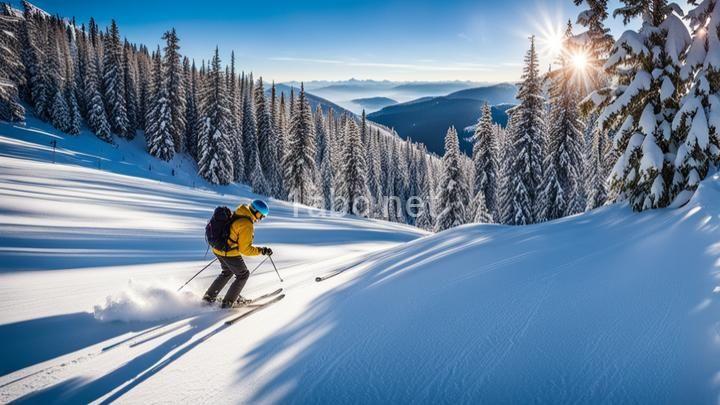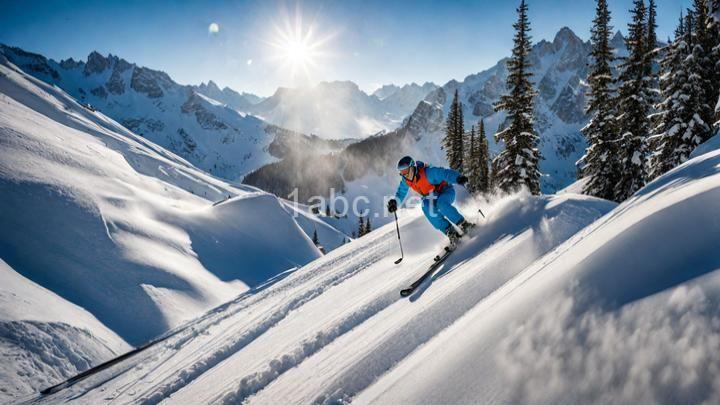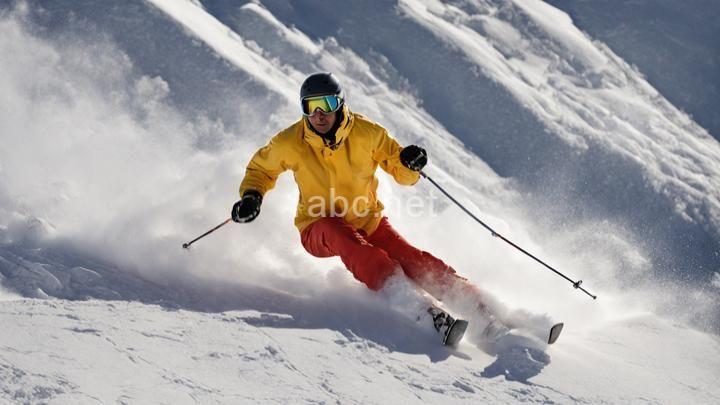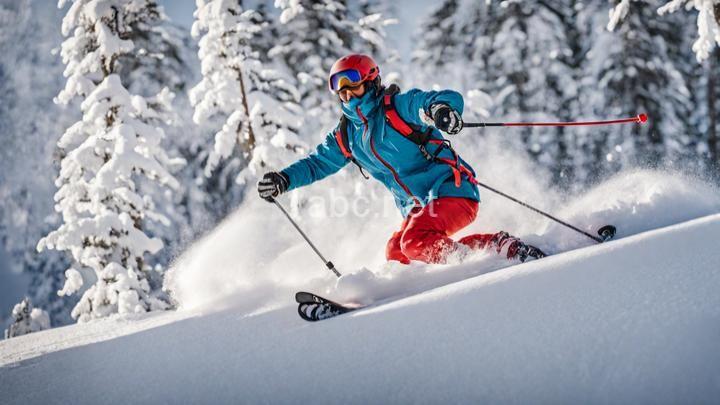Skiing with Confidence: Expert Safety Tips for All Levels
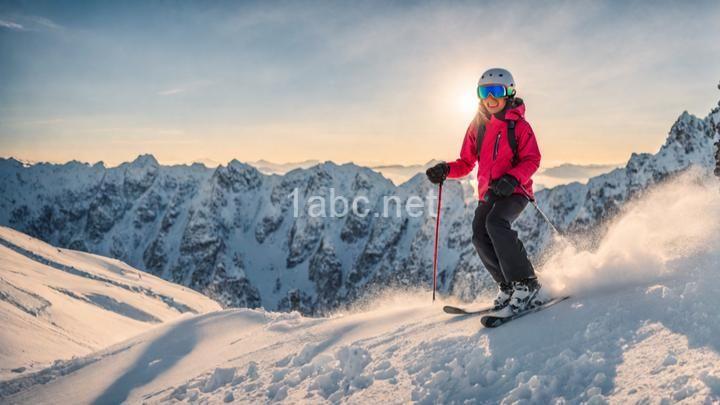
Introduction:
Hello and welcome to our blog! We are thrilled to have you here as we delve into the world of skiing and explore the essential safety tips that can help boost your confidence on the slopes. Whether you are a beginner, intermediate, or advanced skier, safety should always be a top priority. In this blog, we will provide you with expert advice and tips to ensure that you have a safe and enjoyable skiing adventure. So, let's gear up and get ready to hit the slopes with confidence!
I. Preparing for Your Ski Adventure:
A. Gear Up Properly:
Before you embark on your ski adventure, it is crucial to choose the right ski equipment based on your skill level. Skis, boots, and bindings should be appropriately matched to your abilities. It is also essential to ensure that your gear fits well and is in good condition. A loose boot or a malfunctioning binding can lead to accidents and injuries. Additionally, don't forget to equip yourself with essential safety gear such as helmets and goggles. These items provide protection for your head and eyes, safeguarding you from potential hazards on the slopes.
B. Warm-Up Exercises:
Warming up before hitting the slopes is an often overlooked but vital aspect of skiing. Simple exercises like leg stretches, jumping jacks, and squats can help prepare your muscles for the physical demands of skiing. By warming up, you are not only preventing injuries but also boosting your confidence on the slopes. A limber body is more agile and responsive, allowing you to navigate the terrain with ease.
C. Check Weather Conditions:
Staying informed about the weather conditions before heading out for a day of skiing is crucial. Weather forecasts can provide valuable information about snow conditions, visibility, wind speeds, and temperature. It is essential to adjust your plans accordingly based on the available information. In case of adverse weather conditions, it may be wise to modify your route or take necessary precautions. Remember, safety should always be the priority.
II. Safety Tips On The Slopes:
A. Know Your Ability Level:
Honesty is key when it comes to assessing your skiing abilities. It is essential to choose trails and slopes that match your skill level. Pushing beyond your comfort zone prematurely can result in accidents and undermine your confidence. As you gain experience and improve your skills, you can gradually progress to more challenging terrains. By taking it one step at a time, you will feel more confident in your abilities, and your skiing experience will be more enjoyable.
B. Follow Mountain Etiquette:
Mountain etiquette is a set of unwritten rules that promote safety and respect for fellow skiers. Yielding to downhill skiers, avoiding sudden stops, and giving others plenty of space are just a few examples of mountain etiquette. By adhering to these guidelines, you contribute to a safer and more harmonious skiing environment. Remember, skiing is a shared experience, and being considerate of others goes a long way.
C. Master Essential Techniques:
Mastering essential skiing techniques is crucial for both safety and confidence on the slopes. Maintaining balance, controlling speed, and executing smooth turns are fundamental skills that every skier should develop. It is recommended to take lessons from certified instructors who can provide you with proper guidance and instruction. If available, online resources and instructional videos can also be valuable tools to refine your technique.
III. Safety Measures For All Skiers:
A. Wear Protective Gear At All Times:
Wearing protective gear should be non-negotiable for every skier. Helmets, goggles, and other protective equipment can greatly reduce the risk of head and eye injuries. With advancements in technology, safety gear has become more comfortable and efficient, providing an extra layer of protection on the slopes. Investing in high-quality gear is an investment in your safety and confidence while skiing.
B. Stay Hydrated and Fuel Up:
Staying hydrated throughout the day is crucial for maintaining optimal performance and preventing fatigue. Skiing is a physically demanding activity, and it is easy to underestimate the amount of water your body needs. It is recommended to carry a bottle of water with you and take regular breaks to rehydrate. Additionally, fueling your body with nutritious snacks will help maintain energy levels and enhance your skiing experience.
C. Be Aware of Surroundings:
Maintaining situational awareness is vital for staying safe on the slopes. Always be mindful of other skiers, obstacles, and signage. Keep your eyes focused ahead and scan the slopes for any potential hazards. By being aware of your surroundings, you can react quickly and make informed decisions to avoid accidents. Remember, safety is a collective responsibility, and being mindful of others contributes to a safer skiing environment for everyone.
IV. Handling Challenging Situations:
A. Dealing with Steep Slopes or Ice:
Encountering steep slopes or icy conditions can be intimidating for skiers of all levels. However, with the right techniques and adjustments, you can navigate these challenging terrains confidently. To tackle steep slopes, maintain a balanced stance, lean slightly forward, and let your skis glide in a controlled manner. When faced with icy conditions, focus on your edges and engage them more firmly to maintain better control. Remember, practice makes perfect, and with time, challenging situations will become more manageable.
B. Falling Safely:
Falling is an inevitable part of skiing, but knowing how to fall safely can greatly reduce the risk of injuries. If you feel yourself losing balance, try to relax and avoid trying to overcorrect. Aim to fall to the side rather than backward to prevent impacting your head or spine. Once on the ground, protect your head and face with your hands and try to slide to a stop gradually. After a fall, take a moment to assess any injuries before getting back up safely.
Conclusion:
Congratulations on reaching the end of our blog! We hope that the expert safety tips and advice shared here have equipped you with the knowledge and confidence to ski safely on the slopes. By properly preparing for your ski adventure, following mountain etiquette, mastering essential techniques, and prioritizing safety measures, you can enjoy a fulfilling and injury-free skiing experience. Remember, skiing is a fantastic sport that allows you to connect with nature and push your limits. With the right precautions and mindset, you can ski with confidence and create unforgettable memories. So, gear up, stay safe, and have a fantastic time on the slopes!
FREQUENTLY ASKED QUESTIONS
What is Skiing with Confidence: Expert Safety Tips for All Levels?
"Skiing with Confidence: Expert Safety Tips for All Levels" is a comprehensive guide that provides valuable safety tips and advice for skiers of all skill levels. It covers various aspects of skiing, including equipment preparation, basic techniques, and advanced strategies.
This resource aims to help skiers build confidence on the slopes by emphasizing safety measures and addressing common concerns. Whether you are a beginner looking to learn the fundamentals or an experienced skier wanting to enhance your skills, "Skiing with Confidence" offers valuable insights and expert guidance to ensure a safe and enjoyable skiing experience.
Who is the target audience for this content?
The target audience for this content can vary depending on the specific topic being discussed. However, in general, the target audience can be anyone seeking information or support on a wide range of topics.
What are the main objectives of this content?
The main objectives of this content are to provide information, answer questions, and offer support on various topics.
How can this content help improve skiing skills?
This content can help improve skiing skills by providing valuable information, tips, and techniques related to skiing. It may include topics such as proper body positioning, turning techniques, snow conditions, equipment recommendations, and safety guidelines. By actively engaging with this content, skiers can enhance their knowledge and understanding of skiing fundamentals, leading to improved techniques and overall performance on the slopes. Additionally, this content may also inspire skiers to try new tricks or explore different skiing styles, helping them progress and evolve as skiers.
